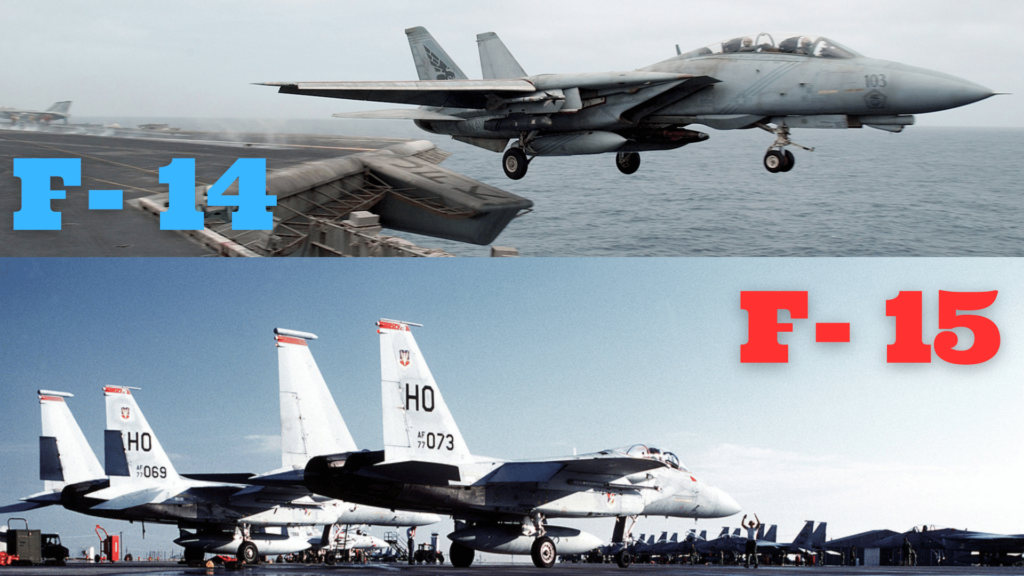Why Iran Chose The F-14 Over The F-15

Military aviation fans would already know that Iran is the only other country outside of the USA to buy the mighty Grumman F-14 Tomcat.
And sadly, not long after Dick Cheney and the Hornet mafia managed to finally get rid of the Tomcat from active service with the US Navy, the US discovered that the Iranians were buying spare parts for their Tomcats on the black market, which ultimately ended up in orders to literally destroy most of the Tomcats sitting in the Davis Monthan boneyard in Arizona, to ensure no more spare parts made their way to Iran.
According to an article by Marc Wolff on The Aviation Geek Club website, approximately 140 Tomcats out of a total built of 712 survived the purge of Cheney, and can be seen if you are lucky enough to be visiting one or more of the museums or selected locations around the USA which have a Tomcat on display.
And, there are estimated to be approximately 12 to 50 left in Iran, depending on the accuracy of the sources.
However, the story of how Iran came to buy the F-14 Tomcat instead of the F-15 Eagle is an interesting – and often inaccurately reported – story.
Long version short, the generally accepted history behind the Iranian purchase is that the Tomcat outperformed the Eagle with a little “creative” cheating in a fly off at Andrews Air Force base in front of the Shah of Iran, and won the competition.
Because of this, the legend goes, Iran ordered 30 F14’s and 424 AIM 54 Phoenix missiles in January 1974, and then a few months later, this order was increased to a total of 80 Tomcats and 714 Phoenix missiles, as well as spare parts and replacement engines for 10 years, complete armament packages, and support infrastructure.
However, following the overthrow of the Shah in 1979, the US broke off all assistance with Iran, which meant no more spare parts nor any further technical support from Grumman.
Now, back to the story at hand…
It seems that winning the fly off at Andrews Air Force base was NOT the deciding factor that made the Iranians choose to buy the Tomcat instead of the Eagle.
Osprey Publishing authors Tom Cooper and Farzad Bishop reported in their 2004 book “Iranian F-14 Tomcat Units In Combat”, that they had spoken to a former Iranian F-14 pilot, Captain Rassi, who had given them the real back story to how the choice was made.
Turns out there were multiple factors that influenced the selection of the F-14, including their need for a “flying radar” that would eliminate their existing challenges with terrain masking for their ground mounted radar sites. Plus it could defend itself against an airborne aggressor if required.
Grumman and the US officials didn’t actually know about this specific requirement when they started up their campaign to sell the Tomcat to the Shah of Iran, who was an experienced pilot himself.
Iranian pilots and military experts had already done extensive analysis on the suitability of the Tomcat vs the Eagle for the role it would fulfill, and had concluded that the combination of the AWG-9 radar and the AIM-54 Phoenix air to air missiles would be far more suited than the F-15 Eagle with its less capable radar and much shorter range AIM-7 Sparrow missiles.
Plus they felt the highly agile flight characteristics of the Tomcat, especially at low level or supersonic speeds thanks to its variable or swing wing, made it a better choice for Iran.
According to Captain Rassi: “We couldn’t care less about what some in the US called “selling” the F-14’s to Iran. It’s totally naive to believe that a show organised for the Shah would make any reasonable and responsible person decide to spend billions of dollars, train thousands of personnel, spend additional millions to build support facilities and thereby influence the future of the whole air force for the following 30 years on the basis of “the F-14 display was better than the F-15!”
“No way. We knew better than to be influenced by the stunts of American pilots.”
“We were searching not only for a fighter superior in manoeuvrability and weaponry, but also for a highly flexible area defence interceptor. We wanted a complete system, including superior sensors, effective long range weapons and man-machine interface that would need little or no outside support. We simply couldn’t ignore the F-14. Its performance during the war with Iraq confirmed our decision beyond any doubt.”
So, that’s the basics of the story of how the Iranians really ended up choosing the F-14 over the F-15.
By necessity, I’ve had to leave out a lot of detail in this article, so if you’d like the full explanation, I highly recommend you go read Dario Leone’s original article on theaviationgeekclub.com website, and also pick up a copy of Cooper, Farzad & illustrator Chris Davey’s excellent book from Osprey Publishing.
Thanks for watching, and if you’d like more videos and articles about military aviation, stop by and join the Facebook group at facebook.com/groups/fightson.
Want More Military Aviation Goodness?
Join us in our private Facebook group where you can enjoy the company of other likeminded military aviation fans, including a growing number of former & current military pilots, Radar Intercept Officers (RIO’s) and Weapon Systems Officers (WSOs).
Plus, get access to our videos and livestream content, all free of charge.
Click this link or the photo below to join.


